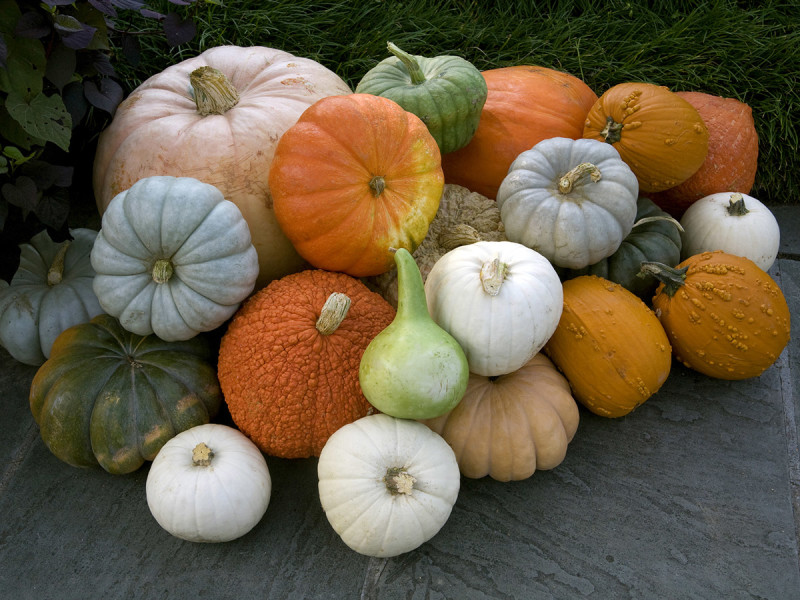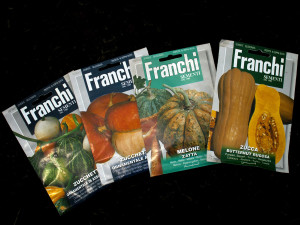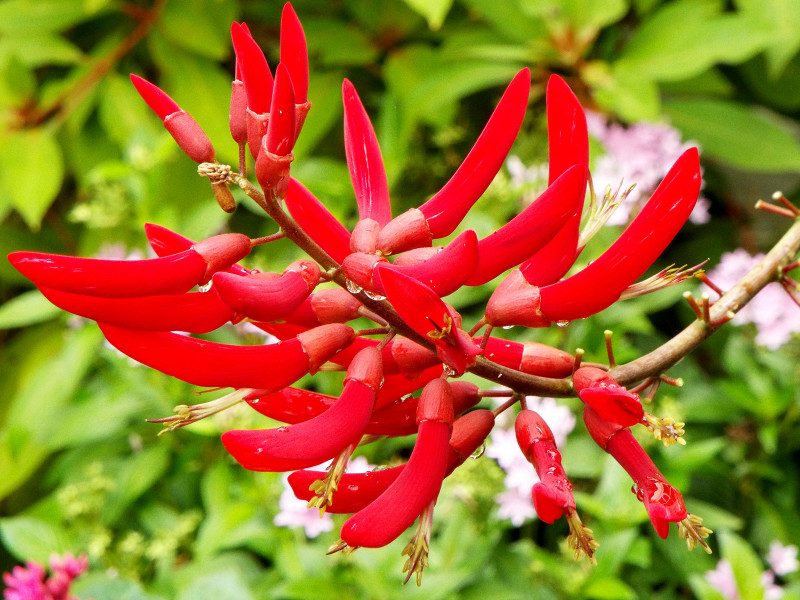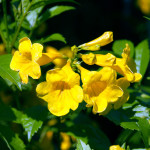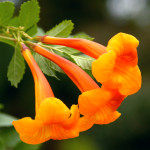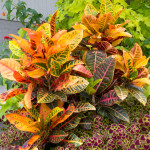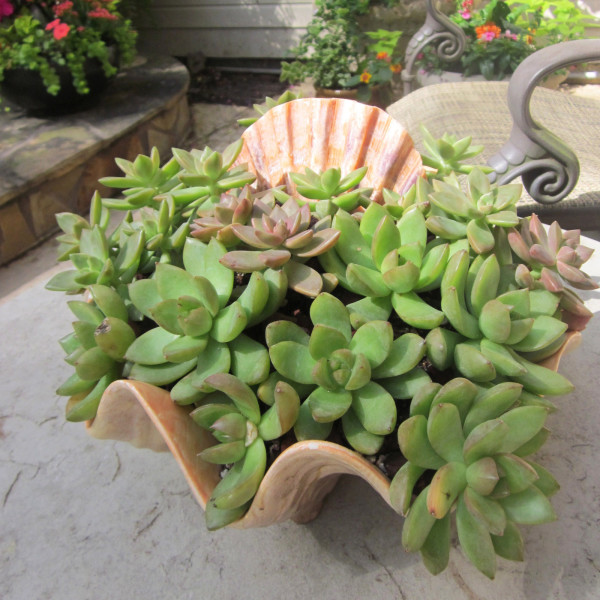After all these years of drought and water restrictions, you’d think that the spring and early summer rains would have been kind to our lawns. Well, apparently not, if you count the questions gardeners have been asking. It’s been a crazy late winter and spring, and now that we’ve made it through June, we’re just beginning to see things turn back more toward normal. Let’s address some of the questions that may still be on your mind.

Dead Areas in Grass
Over the past month, I’ve seen probably 50 photos of St. Augustine turf that had large dead or weak areas. In almost every case, the problem was take all root rot (TARR). It’s a fungal root problem that is worse some years than others. This year wasn’t as bad as we saw several years ago, but for those folks whose lawns were slow to green up (or worse), it certainly wasn’t much fun.
If you confirm TARR in St. Augustine in May or early June, applying a 1-inch layer of sphagnum peat moss usually helps. The fungus is repressed by the acidic layer in the runner and root zone, and the green-up can be quick and dramatic. However, now that it’s turned much hotter and drier, the TARR fungus has gone essentially dormant and your turf should be growing and covering. If you have large areas that are completely bare, and if you’re sure it’s not caused by excessive shade, transplant 6-inch plugs of sod and set them 18 inches apart, checkerboard-style. They will fill in the empty spots quickly.

Pythium (cottony blight, or southern blight) in bermuda turf causes unusual patterns of dead grass. Usually a problem later in the summer, it popped up in early and mid-June this year.
I didn’t get a lot of questions about dead spots in bermuda, but those lawns and photos that I did see were obviously struggling with really early outbreaks of Pythium blight, also called cottony blight or southern blight. Patches of grass will be dark green and oily one day, and one or two days later they’ll be completely brown. It also shows up in unusual patterns. Fungicides don’t usually help very much on this one. Turf experts recommend good water management and drainage.
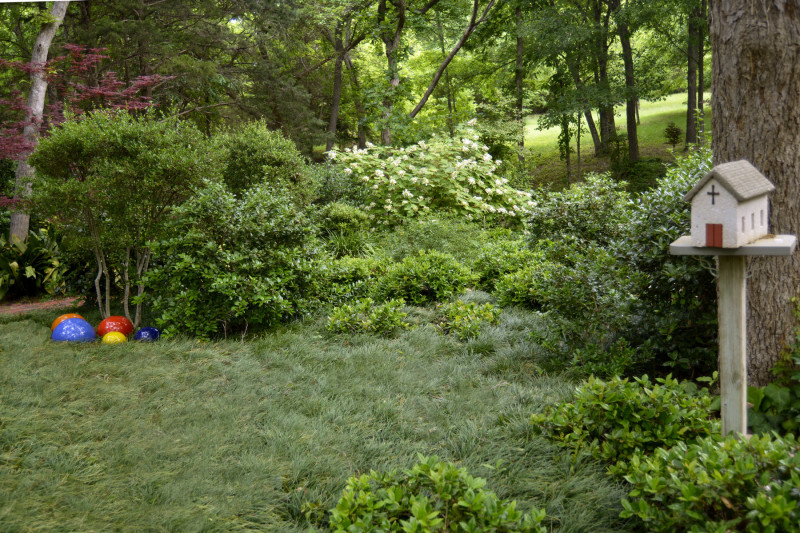
Almost complete shade has required a total makeover of the Sperry backyard. Turf is gone, replaced by mondograss (a.k.a. “monkeygrass”), and shade-tolerant shrubs complete the landscape.
When the Shade Is Simply Too Heavy
We Texans covet our shade trees. In fact, we can’t grow shade quickly enough to keep us satisfied. But trees have really grown rapidly with all of the rain. When the trees become full and mature, as they have at our house over the 38 years that we’ve lived in our native pecan forest, growing grass becomes impractical if not impossible. That’s when we try to find alternatives, and that’s what I’ll show you in this short video trip through part of our gardens.
I get this grass-in-the-shade question so often that I just archived a lot of details in “Notes,” specifically “Coping With Shade,” on my Facebook page. You might find some useful information there.
Fertilizing Schedules Revamped
If you applied your all-nitrogen lawn food in April (high-nitrogen in sandy soils), there probably isn’t much of it left. Find a premium lawn fertilizer with half or more of that nitrogen in slow-release (“encapsulated” or “coated”) form. Apply it at the recommended rate in bermuda and zoysia lawns, but at half the recommended rate for St. Augustine. Nitrogen promotes gray leaf spot fungus in St. Augustine lawns in the summer, so while you want to provide sufficient nutrition to keep the grass healthy, you certainly don’t want to apply it to excess.
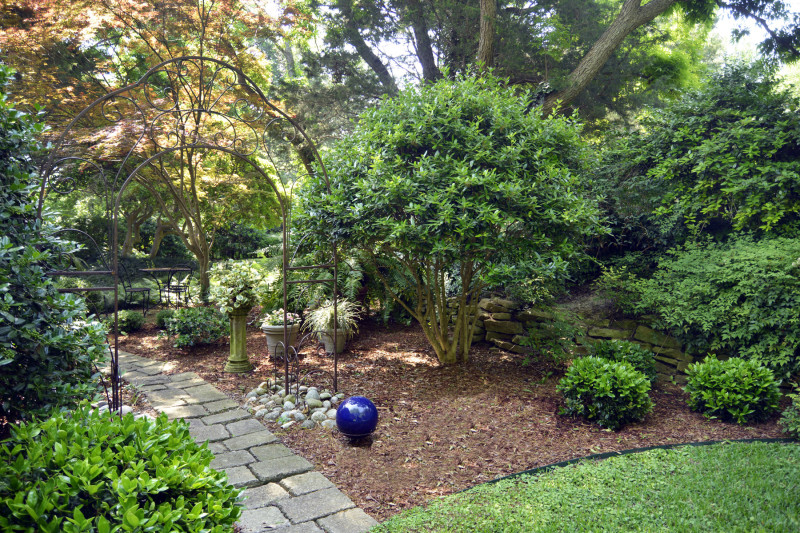
Neil’s devotion to hollies in his own home landscape is well documented. Here you see, left to right, Nellie R. Stevens holly in the left border, Carissa hollies in the foreground, Needlepoint holly retrained tree-form to the right of the arch, and Mary Nell hollies elevated above the rock retaining wall. Through the arch and visible above the small, black cafe table, three trunks of a very old yaupon holly tree.

Sounds weird, but the winter in winter squash refers to storage potential. These plants actually demand hot weather for good growth. Typical types include butternut, buttercup, acorn and cushaw, but there are many others – and one could throw in pumpkins for good measure. A number of Cucurbita species are involved, including C. pepo, C. maxima, C. moschata and C. mixta (argyrosperma).
Give them room
Most squash require lots of room – with vines that grow 15 feet or longer – but there are a few bush varieties like Cream of the Crop acorn and Honey Bear acorn that are relatively compact bushes. If you can spare a little more space, try Early Butternut, a semi-bush type. One strategy would be to grow them vertically. The vining types that produce fruit weighing less than 5 pounds should work well on a sturdy trellis made from cattle panels or any other heavy-duty trellis material.
Try these varieties

Cream of the Crop acorn squash is among the bush varieties that don’t require as much space as other Cucurbita varieties.
If you’re new to this crop, concentrate on the acorn, butternut and buttercup types. They are relatively easy to grow – and baked with butter and brown sugar, they should be an instant family favorite. After a few successes, you may want to check out some soup recipes or break out the turkey fryer and put a whole cushaw in the deep fat! (Just kidding about the turkey fryer.)
Some other varieties you might want to try include Kabocha – usually reddish-orange – but it may come in gray or green; Sweet Dumpling – a small-fruited hybrid variety that is mild and nutty; or Sweet Mama – a Japanese Kabocha hybrid that is sweet to eat and great for storage. Spaghetti squash doesn’t store as long as most of the winter squash varieties, but the youngsters in your family may request it so often it won’t last long anyway.
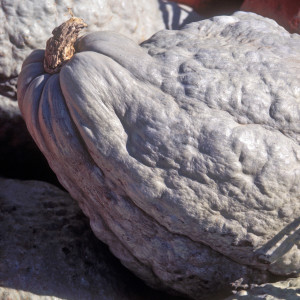
Blue Hubbard is typical of the winter squashes with thick, hard rinds that make them easy to store. Blue Hubbards can weigh as much as 40 pounds.
Feed and protect
Winter squash are heavy feeders, so don’t be afraid to top beds or hills with 6 to 8 inches of compost and work 5 pounds of a complete fertilizer like 15-5-10 in per 100 square feet. If you’re planting in hills (mounds of soil/compost 6 to 8 feet across), don’t hesitate to mix the soluble fertilizer as far out as the variety is likely to send runners, since the runners typically root and contribute nutrition to the plant.
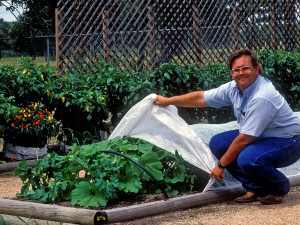
Hoops and fiber row covers can provide valuable protection for young pumpkin and winter squash plantings.
The same pests that attack summer squash will go after the winter types as well. You can spray for vine borers and squash bugs, but virus diseases tend to build up late in the season, and though they don’t usually kill the plant, production is reduced and color breaking in the fruit may result in some really strange-looking squash/pumpkins. It may sound a bit radical, but covering the row with hoops and fiber row cover until the plants are large enough to begin blooming helps to reduce viral infections. Squash bugs are one of the carriers of virus diseases, so pest control helps, too. Even under row cover you should check occasionally to make sure the bad insects aren’t having a party – safe and secure under the cover.
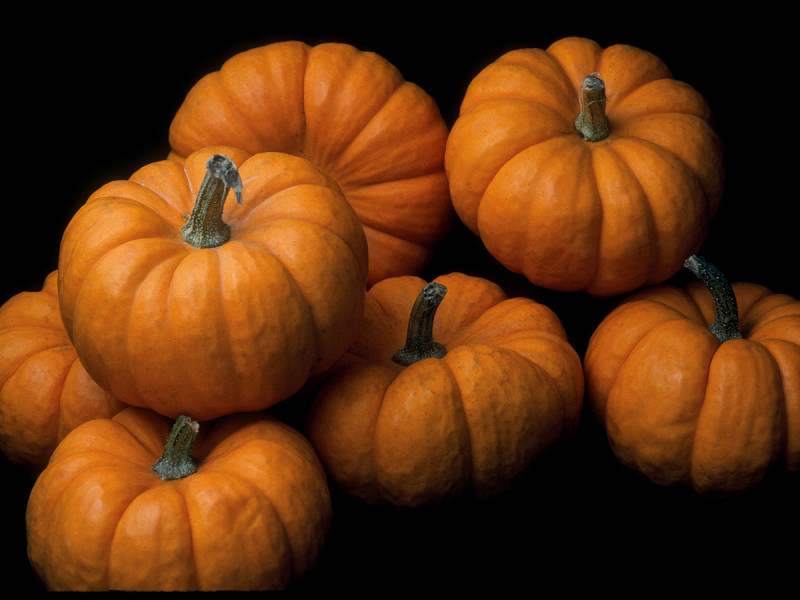
If you don’t have room to grow your own, invest in a pile of mini pumpkins when the season comes. They keep beautifully.
Enjoy those pumpkins and squash!
If you don’t have room for winter squash, there are always local markets for mounds of pumpkins and winter squash. They are actually a good buy and will usually last all winter – plus most make good table fare. The Dallas Arboretum and Botanical Garden puts on a superb display of “punkins” in October. You can’t take them home, but they make a beautiful background for family pictures, and chances are a roadside market or even your local supermarket will offer some of them for sale.
Nothing ignites a garden like vibrant color … the bolder the better. Hot Texas summers light the fuse on some screaming hot hues sure to propel your drab garden to new heights and explode in a crescendo of color.

Coralbeans
Coralbeans (Erythrina sp.) flower in long (24 inches plus), rocketing spears of screaming red blossoms that resemble flash-frozen aerial fireworks. Tropical and subtropical trees that can be grown in some parts of Texas, these beauties bring an exotic flavor to the garden. Hardy coralbean (E. herbacea) is winter hardy as far north as McKinney, where it behaves like an herbaceous perennial (cut it to the ground mid-winter). Cockspur coral tree (E. crista-galli) is a small accent tree for the warmer regions of Texas (Houston and southward). Shrub coral tree (E. x bidwillii) is a hybrid between the two, acquiring hardiness from one parent and larger inflorescences from the other. I have seen it as far north as Waco, but it’s especially popular in Austin and San Antonio, where it is most often grown as a large shrub, but can be trained to tree form.
Cosmos
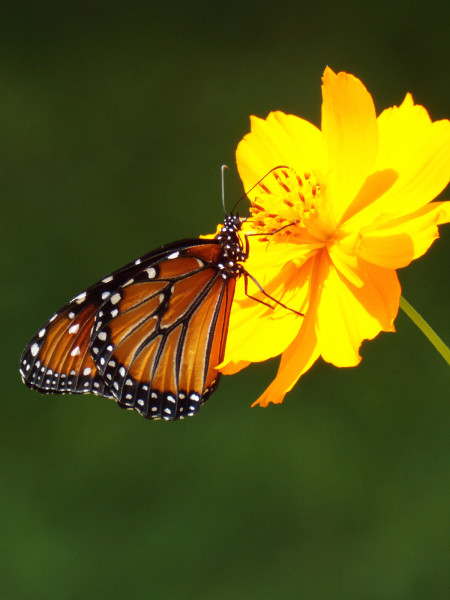
Cosmos are grown easily from seed. They love Texas heat and sun, and butterflies love them in return. Photo © Steven L. Chamblee
Famous for being one of the easiest plants to grow from seed, cosmos also puts on quite the show. Rich reds, super-bright pinks, and satiny whites are the trademarks of Cosmos bipinnatus, one of two species commonly grown in Texas gardens. The other, Cosmos sulphureus, produces yellow, golden, or orange flowers. Both species are native to Mexico, prefer average soil, no fertilizer, hot weather, full sun, and unlike so many other flowers, actually thrive in straight western exposure. Lots of colors and color mixes are available, and all seem to do well in Texas, though those irresistible “seashell” varieties with the tubular, fluted petals seem less robust. Read the fine print on the label as to the height of your particular variety, as they range from about 18 inches to over 10 feet tall!
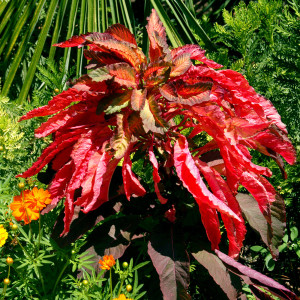
The fiery foliage of ornamental amaranth is a special gift in hot summer gardens. Photo © Neil Sperry
Amaranth
Ornamental amaranth (Amaranthus tricolor) is a new twist on an old plant. (Amaranth has been grown worldwide as a food crop for more than 8,000 years!) Fiery foliar colors erupt on serpentine columns of slender leaves that create a geyser effect, as well as some inspired names for particular varieties, such as Flaming Fountain and Molten Fire. For foodie gardeners, the grain amaranths produce protein-packed seeds with a nearly perfect amino acid profile. These tiny seeds are tucked away in strikingly beautiful inflorescences of green, orange, red, or purple, depending upon variety. These flower spikes vary wildly in structure, from feathery to stringy, knobby to gnarly, inspiring names such as Golden Giant, Love Lies Bleeding, Elephant, and Dreadlocks. Perhaps the best feature of amaranths is that they perform superbly in full sun, hot summers, and average garden soils.

Moy Grande, a hibiscus bred by the late Dr. Ying Doon Moy of the San Antonio Botanical Garden, bears huge neon pink blossoms in abundance. Photo © Carolyn Skei.
Hibiscus
Hibiscus are hot! Huge blossoms bring a boldness to the garden like nothing else. Texas Star hibiscus (Hibiscus coccineus) is a large perennial, often reaching 8 feet tall and sporting bright red, 6-inch-wide flowers. The petals on this hibiscus do not overlap, creating the distinctive star-shaped blossoms. Moy Grande, a hybridized hibiscus, also has star-shaped blossoms, but they reach an impressive 12 inches in diameter. Other excellent hibiscus hybrids include Flare, Lord Baltimore (both red), and Lady Baltimore (pink). Chinese hibiscus (H. rosa-sinensis) is a tropical plant that flowers heavily all summer. It comes in a seemingly endless variety of flower colors, including some with four distinct radiating colors on the same blossom.
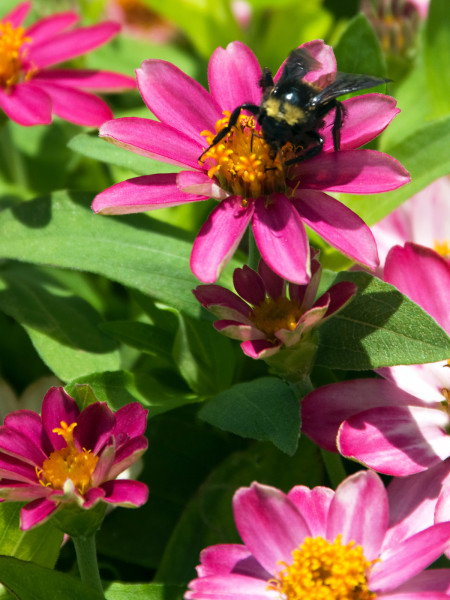
Zinnias are old-fashioned summer favorites that are still staples in gardens all across Texas. Photo © Neil Sperry.
Zinnias
Zinnias are old-fashioned favorites that never really went out of style. The huge blossoms on Zinnia elegans (arguably grandmother’s favorite flower) can grow up to 6 inches wide and vary through the most startling range of colors … primaries, pastels, and almost every shade of each. New generations of zinnia have been hybridized (Profusion, Zahara), with smaller but more numerous flowers, compact growth habits, and disease resistance, primarily to powdery mildew. Super tough and easy to grow, zinnias add zing to any Texas garden.
Send your garden into orbit with some hot color!
The words “water feature” take on a new perspective at the Ford garden. This carefully designed, multi-level, back yard water world flaunts three koi pools, streams, a footbridge, seven waterfalls ranging in height from a gentle 1-foot tumble to a 4-foot cascading drop, and a back yard swimming pool. Lush aquatic plantings, ferns, palms and other flora frame the water features, softening the site.
“The plants, shrubs, and trees, along with the stacked rocks that comprise the waterfalls, add depth and dimension, which enhances the natural appearance of the garden,” says Wayne Ford.

Nearly 50 kinds of trees canopy the Ford landscape, creating a setting appropriate for everything from receptions and concerts to quiet contemplation of wildlife.
The series of dimensional planes also lends a sense of discovery. Multiple sitting areas, including a bench in a shade garden, a glider in a corner retreat, and chairs near the largest koi pool, provide various vantage points.
“You experience something different in each area,” says Wayne. “There is an element of discovery throughout the entire back yard.”

From humble beginnings
But this Kingwood garden wasn’t always the tropical paradise that it is today.
“When we moved here, there were trees in the back yard and grass that didn’t grow,” says Kim Ford. “The only feature was a 12-by-12-foot concrete patio at the back door.” The Fords added a swimming pool, followed by a koi pond.
“Wayne dug the koi pond by hand from our clay soil,” says Kim. “It took a year to finish.”
Seven years later the couple decided to tackle a back yard drainage problem by building another pond. The decision to hire Houston landscape designer Ron Davis resulted in an extensive back yard makeover.
“He came inside the house, paused at every window, and stood in the shower to gaze into the back yard,” says Wayne. “Then he sketched a plan on a scrap of paper. He said he could raise the back yard in such a way that it would look like 100 acres.
“We hauled in 42 tons of landscape rock and boulders. He piled it up and made it look like it had been there for 1,000 years.”
The renovation took about a month. Since then the Fords have added additional rock and landscape features.
Despite its dimensions – the garden measures a mere 150 feet across – it is a study in how koi, plants, pets, practical solutions, hobbies, and even water recreation can merge together into a beautiful and unified retreat.
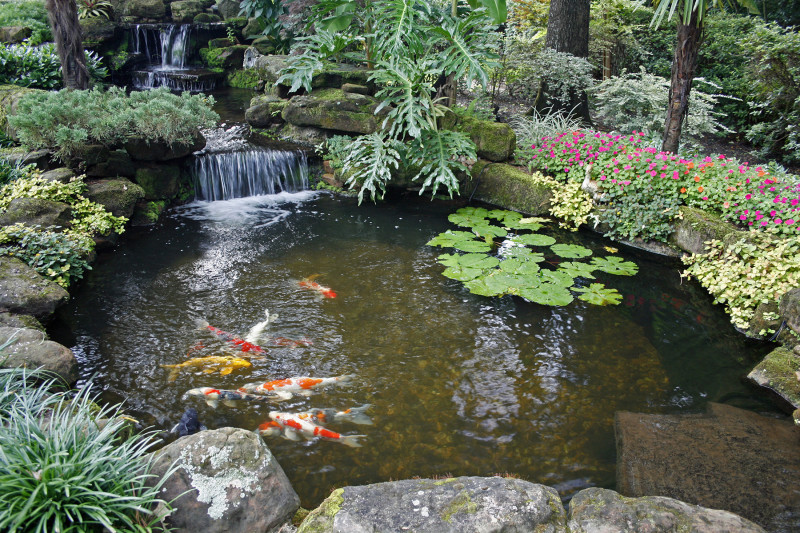
This is largest of the couple’s koi ponds. Wayne Ford is a self-described “koi snob,” who dug the first of their ponds by hand.
Water, water everywhere
Wayne, the “pond aficionado” of the family, designed the koi ponds in such a way as to hide the pipes, pumps, and interworkings of the filtration system. He incorporated underwater ledges to hold pots of water lilies, among other aquatic plants. He built beds around the ponds’ perimeters to showcase ferns and flowers. The koi ponds are designed to repel raccoons, natural predators that require a wading area in order to fish.
The Fords’ extensive water filtration system not only helps balance the ecosystem to keep the water healthy for their fish and plants, but it enhances garden features. In all, high-efficiency pumps circulate some 6,000 gallons of well water 2.5 times per hour.
“At the top of the tallest waterfall, water is pushed to the surface through a series of mesh screens that sit in a tub filled with thickly rooted water plants,” says Kim. “The mesh contains bacteria that convert ammonia from fish droppings into nitrogen that the plants take up as fertilizer. Water then flows down the sides of the waterfall, where it is aerated and exposed to sunlight [UV light]. The splashing action oxygenates the water for the fish; the UV light helps kill algae.”
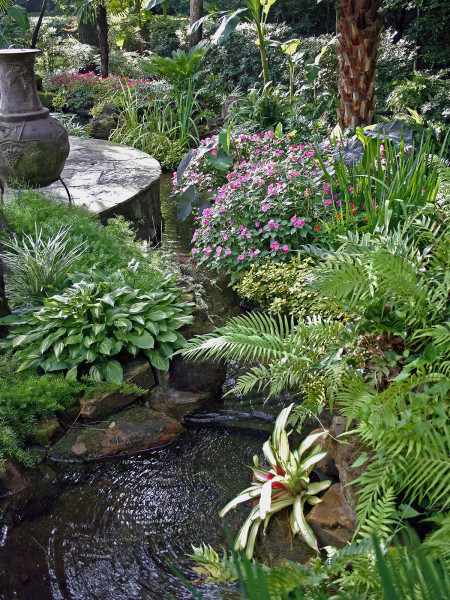
Impatiens, Louisiana irises, hostas, ferns and a dazzling bromeliad (foreground) thrive in the boggy area adjacent to the stream.
Kim’s favorite filtration component is the bog, a shallow, gravel-filled water garden that filters most of the water circulating through the stream and ponds. Here, water percolates up through gravel, allowing bacteria on the gravel’s surface to convert ammonia into plant-nurturing nitrogen.
“A surprising number of plants thrive in the bog that you wouldn’t expect would grow in water,” says the hands-on gardener. “Our impatiens grow 2 feet tall and come back each year. They live in gravel that has water percolating through it constantly.” Other bog staples include water fern, umbrella plant, lizard tongue, and sweet flag. Calla lily, a Kim favorite, brightens the bog with its white, cup-like blooms in late spring.
With the balance of nature in check, each morning and evening the Fords enjoy the collage of color created by Simba, Spock, Hank and nearly three dozen other koi as they vie for pellets at feeding time.
Wayne, a self-described “koi snob,” rarely introduces other fish species into the ponds. The exception is blue gill. “Occasionally, I release blue gill into the stream to help control tadpole populations,” he says.
But the playful flashes of orange, black, gold and white that animate the ponds aren’t the only color here. Vibrant floral hues invigorate the surrounding gardens.
A colorful, tropical paradise
“Color is important to me,” says Kim. “I love orange, pink, purple, and blue … all mixed together. I like the intensity of New Zealand impatiens and fuchsia cyclamen.
Some 70 azaleas (transplanted by Wayne before the back yard renovation began) kick off the color parade in early spring. Their hot pink blooms are accompanied by redbud, dogwood, and purple-blooming Louisiana iris. Containers, displayed in clusters near the water, hold petunias, geraniums and other seasonal favorites. In summer, caladiums and hostas enliven the shade garden with their blue, white, gold and green variegated foliage. Ferns, including foxtail, holly, sword, wood, maidenhair and asparagus ferns, mingle throughout the beds.
The garden showcases palms, as well. The collection includes 30-foot-tall queen palms, pygmy palms, and Chinese fan palms, among others.
“The Mediterranean fan palm attracts birds,” says Kim.
“They pluck off the shaggy fiber on the trunk to use for nest building.”

Brightly blooming cannas and striking sago palms flank the first, and smallest, of the Fords’ koi ponds.
Bromeliads, birds of paradise, butterfly iris, begonias, gingers, potato vines, philodendrons and sago palms (technically cycads, not true palms) add to the tropical allure. Towering oak trees and pine trees comprise a high canopy. In all, nearly 50 different types of trees, shrubs, annuals and perennials thrive here.
Not surprisingly, the site has twice been featured on garden tours. Friends and family gather here for receptions, parties, and even mini-concerts performed by up-and-coming musicians.
But what Wayne and Kim love best is the quiet time … the swish of water from playful koi, the chirping of birds, the unfurling of buds, and the misty ambience created by light filtering through the trees as the sun rises each morning.
“We enjoy the solitude and privacy created by the garden,” says Kim. “It is our sanctuary in the midst of the city.”

